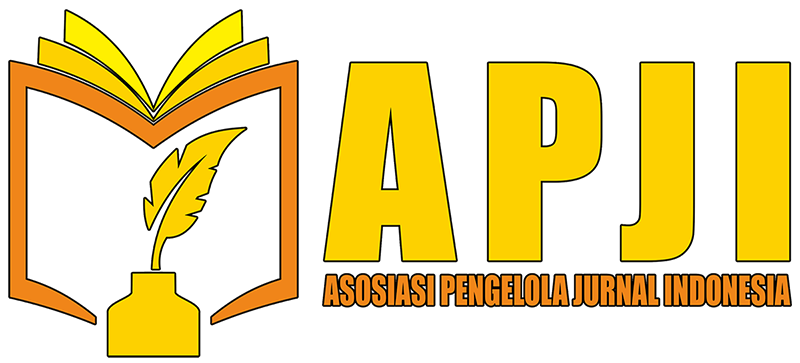Innovative Approaches to Urban Drainage System : A Review
DOI:
https://doi.org/10.61991/ijeet.v2i2.48Keywords:
Innovative Approach, Drainage, TechnologyAbstract
Conventional urban drainage systems are often unable to cope with extreme rainfall and rapid urbanization, resulting in flooding and water pollution. Innovative approaches are needed to improve the performance and sustainability of urban drainage systems. This research aims to explore and analyze innovative approaches in urban drainage systems to improve efficiency, sustainability and resilience to climate change. This type of research is literature research. Data collection techniques are direct observation through journal databases and documentation. Data analysis in the research is qualitative data analysis. The results concluded a promising innovative approach to improve the performance and sustainability of urban drainage systems. Integrated application of this innovative approach can help create more resilient, sustainable and environmentally friendly urban drainage systems, contributing to healthier and climate change resilient cities. Further research is needed to evaluate the long-term effectiveness and scalability of this approach in various urban contexts.
Downloads
References
Abobaker, H. A. M., Genci, J., Gamcova, M., & Ismeal, G. A. M. (2020). Design and implementation of secured power grid system with information and communication technology. SN Applied Sciences, 2(12), 1–9. https://doi.org/10.1007/s42452-020-03820-w
Balla, K. M., Schou, C., Bendtsen, J. D., Ocampo-Martinez, C., & Kallesoe, C. S. (2022). A Nonlinear Predictive Control Approach for Urban Drainage Networks Using Data-Driven Models and Moving Horizon Estimation. IEEE Transactions on Control Systems Technology, 30(5), 2147–2162. https://doi.org/10.1109/TCST.2021.3137712
Bartos, M., & Kerkez, B. (2021). Pipedream: An interactive digital twin model for natural and urban drainage systems. Environmental Modelling and Software, 144, 105120. https://doi.org/10.1016/j.envsoft.2021.105120
Chapa, F., Pérez, M., & Hack, J. (2020). Experimenting transition to sustainable urban drainage systems—identifying constraints and unintended processes in a tropical highly urbanized watershed. Water (Switzerland), 12(12). https://doi.org/10.3390/w12123554
Esmail, B. A., & Suleiman, L. (2020). Analyzing evidence of sustainable urban water management systems: A review through the lenses of sociotechnical transitions. Sustainability (Switzerland), 12(11). https://doi.org/10.3390/su12114481
Guptha, G. C., Swain, S., Al-Ansari, N., Taloor, A. K., & Dayal, D. (2022). Assessing the role of SuDS in resilience enhancement of urban drainage system: A case study of Gurugram City, India. Urban Climate, 41(December 2021), 101075. https://doi.org/10.1016/j.uclim.2021.101075
Hendratta, L. A., & Kenda, A. (2010). An Innovative Sustainable Approach on Urban Drainage System of Manado City. Methodology, year, 1–11.
Huang, Y., Tian, Z., Ke, Q., Liu, J., Irannezhad, M., Fan, D., Hou, M., & Sun, L. (2020). Nature-based solutions for urban pluvial flood risk management. Wiley Interdisciplinary Reviews: Water, 7(3), 1–17. https://doi.org/10.1002/WAT2.1421
Kourtis, I. M., Tsihrintzis, V. A., & Baltas, E. (2020). A robust approach for comparing conventional and sustainable flood mitigation measures in urban basins. Journal of Environmental Management, 269(May). https://doi.org/10.1016/j.jenvman.2020.110822
Miguez, M. G., Bahiense, J. M., Rezende, O. M., & Veról, A. P. (2011). New urban developments: Flood control and LID - a sustainable approach for urban drainage systems. WIT Transactions on Ecology and the Environment, 155, 469–480. https://doi.org/10.2495/SC120391
Miguez, M. G., Bahiense, J. M., Rezende, O. M., & Veról, A. P. (2014). Sustainable urban drainage approach, focusing on lid techniques, applied to the design of new housing subdivisions in the context of a growing city. International Journal of Sustainable Development and Planning, 9(4), 538–552. https://doi.org/10.2495/SDP-V9-N4-538-552
Mohammadiun, S., Yazdi, J., Hager, J., Salehi Neyshabouri, S. A. A., Sadiq, R., Hewage, K., & Alavi Gharahbagh, A. (2020). Effects of bottleneck blockage on the resilience of an urban stormwater drainage system. Hydrological Sciences Journal, 65(2), 281–295. https://doi.org/10.1080/02626667.2019.1690657
Nguyen, H. S., Adachi, Y., Kizuki, T., Maeba, H., & Inazumi, S. (2020). Integration of information and communication technology (ICT) into cement deep mixing method. International Journal of GEOMATE, 19(74), 194–200. https://doi.org/10.21660/2020.74.9329
Nieuwenhuis, E., Cuppen, E., Langeveld, J., & de Bruijn, H. (2021). Towards the integrated management of urban water systems: Conceptualizing integration and its uncertainties. Journal of Cleaner Production, 280, 124977. https://doi.org/10.1016/j.jclepro.2020.124977
Noe, G. B., Cashman, M. J., Skalak, K., Gellis, A., Hopkins, K. G., Moyer, D., Webber, J., Benthem, A., Maloney, K., Brakebill, J., Sekellick, A., Langland, M., Zhang, Q., Shenk, G., Keisman, J., & Hupp, C. (2020). Sediment dynamics and implications for management: State of the science from long-term research in the Chesapeake Bay watershed, USA. Wiley Interdisciplinary Reviews: Water, 7(4), 1–28. https://doi.org/10.1002/wat2.1454
O’Donnell, E. C., & Thorne, C. R. (2020). Drivers of future urban flood risk. Philosophical Transactions of the Royal Society A: Mathematical, Physical and Engineering Sciences, 378(2168). https://doi.org/10.1098/rsta.2019.0216
Oberascher, M., Rauch, W., & Sitzenfrei, R. (2022). Towards a smart water city: A comprehensive review of applications, data requirements, and communication technologies for integrated management. Sustainable Cities and Society, 76(September 2021), 103442. https://doi.org/10.1016/j.scs.2021.103442
Pereira, R. F. S., de Figueiredo, N. M., & Filho, L. C. C. (2023). Performance evaluation of urban drainage systems: an analytic hierarchy process approach for the Jaracati basin in Brazil. Acta Scientiarum - Technology, 45(2020), 1–14. https://doi.org/10.4025/actascitechnol.v45i1.63176
Piadeh, F., Behzadian, K., & Alani, A. M. (2022). A critical review of real-time modelling of flood forecasting in urban drainage systems. Journal of Hydrology, 607(January), 127476. https://doi.org/10.1016/j.jhydrol.2022.127476
Piazza, P., & Ursino, N. (2022). Modelling Infiltration Systems’ Performance for Efficient, Sustainable or Circular Urban Water Drainage. Water (Switzerland), 14(17). https://doi.org/10.3390/w14172620
Raimondi, A., Di Chiano, M. G., Marchioni, M., Sanfilippo, U., & Becciu, G. (2023). Probabilistic modeling of sustainable urban drainage systems. Urban Ecosystems, 26(2), 493–502. https://doi.org/10.1007/s11252-022-01299-4
Roosipuu, P., Annus, I., Kuusik, A., Kändler, N., & Alam, M. M. (2023). Monitoring and control of smart urban drainage systems using NB-IoT cellular sensor networks. Water Science and Technology, 88(2), 339–354. https://doi.org/10.2166/wst.2023.222
Sadr, S. M. K., Casal-Campos, A., Fu, G., Farmani, R., Ward, S., & Butler, D. (2020). Strategic planning of the integrated urban wastewater system using adaptation pathways. Water Research, 182, 116013. https://doi.org/10.1016/j.watres.2020.116013
Santos, A., Junior, J. M., Silva, J. de A., Pereira, R., Matos, D., Menezes, G., Higa, L., Eltner, A., Ramos, A. P., Osco, L., & Gonçalves, W. (2020). Storm-drain and manhole detection using the retinanet method. Sensors (Switzerland), 20(16), 1–12. https://doi.org/10.3390/s20164450
Schellenberg, T., Subramanian, V., Ganeshan, G., Tompkins, D., & Pradeep, R. (2020). Wastewater Discharge Standards in the Evolving Context of Urban Sustainability–The Case of India. Frontiers in Environmental Science, 8(April). https://doi.org/10.3389/fenvs.2020.00030
Scholz, M. (2015). Sustainable drainage systems. Water (Switzerland), 7(5), 2272–2274. https://doi.org/10.3390/w7052272
Starzec, M., & Dziopak, J. (2020). A case study of the retention efficiency of a traditional and innovative drainage system. Resources, 9(9), 1–19. https://doi.org/10.3390/resources9090108
Teshome Sewnet, M., & Revathi Devi, A. (2020). A review of recent studies on urban stormwater drainage system for urban flood management. Preprints, October, 1–15. https://doi.org/10.20944/preprints202010.0295.v2
Thomas, G., Sheridan, C., & Holm, P. E. (2022). A critical review of phytoremediation for acid mine drainage-impacted environments. Science of the Total Environment, 811, 152230. https://doi.org/10.1016/j.scitotenv.2021.152230
Todhunter, C., Qu, Q., & Qin, J. (2016). An Innovative Drainage System for Coal Mine Methane Capture. Scientific and Industrial Research Organisation, 18–20.
Torres, M. N., Fontecha, J. E., Zhu, Z., Walteros, J. L., & Rodríguez, J. P. (2020). A participatory approach based on stochastic optimization for the spatial allocation of Sustainable Urban Drainage Systems for rainwater harvesting. Environmental Modelling and Software, 123(October 2019). https://doi.org/10.1016/j.envsoft.2019.104532
Zhai, J., Ren, J., Xi, M., Tang, X., & Zhang, Y. (2021). Multiscale watershed landscape infrastructure: Integrated system design for sponge city development. Urban Forestry and Urban Greening, 60(August 2020). https://doi.org/10.1016/j.ufug.2021.127060
Downloads
Published
How to Cite
Issue
Section
License
Copyright (c) 2024 Muhammad Ade Kurnia Harahap, Loso Judijanto, Bucky Wibawa Karya Guna, Jasman, Ilham Samanlangi

This work is licensed under a Creative Commons Attribution-ShareAlike 4.0 International License.













